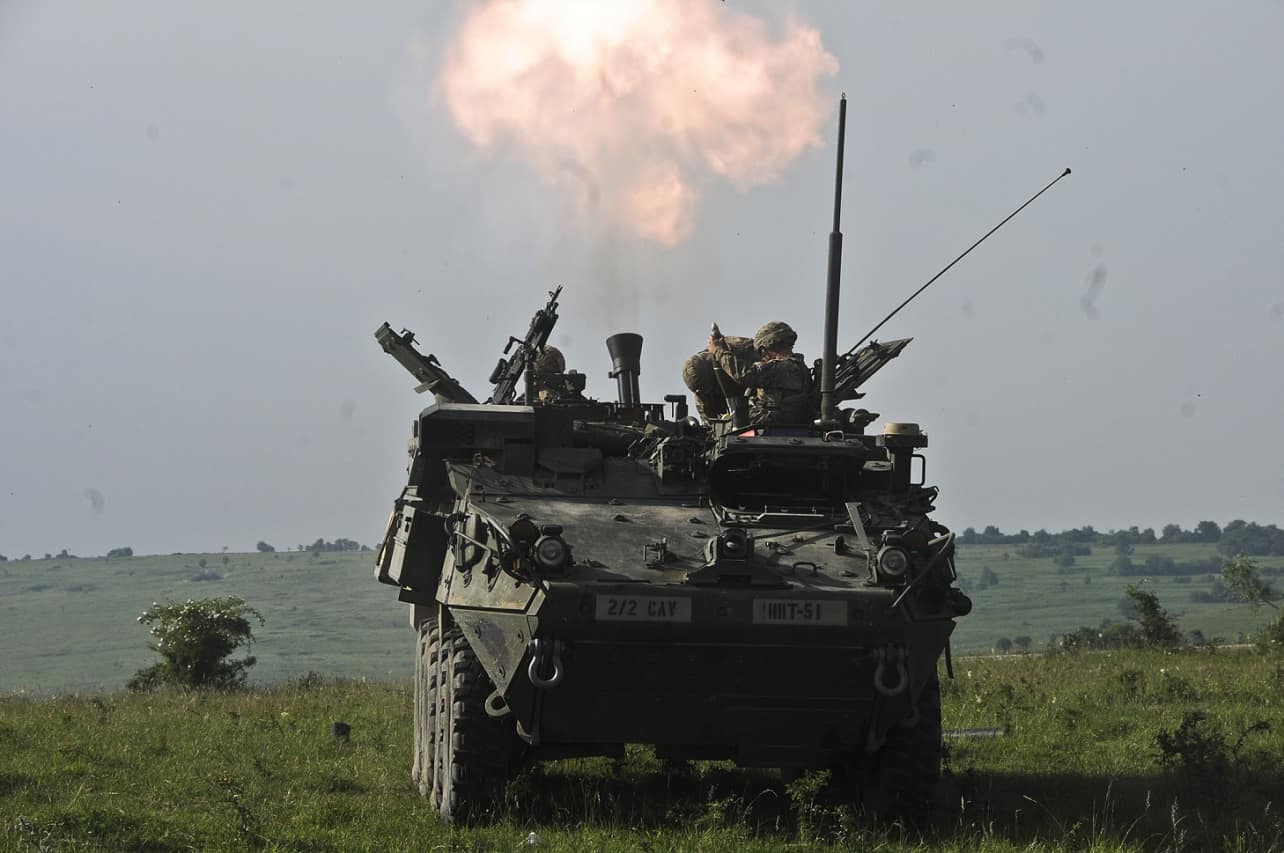U.S. Army leaders discuss future of Stryker brigade combat teams
Posted on
U.S. Army leaders have discussed the future of the Army’s Stryker brigade combat teams during the opening day of the three-day 2019 Maneuver Warfighter Conference Sept. 10.
The Maneuver Warfighter Conference is an annual event hosted by the Maneuver Center of Excellence that gathers senior leaders and subject matter experts from across the Army, sister services and from partner nations’ militaries to elaborate upon and discuss issues relevant to the Army’s Maneuver Force. The theme of this year’s conference is “The Brigade Combat Team: Readying for Large Scale Combat.”
As to the Stryker Brigade Combat Team, or SBCT, this is an infantry-centric unit with 3,600 soldiers that combines many of the best characteristics of the current Army forces and exploits technology to fill a current operations capability gap between the Army’s heavy and light forces.
Currently, the Stryker force accounts for nearly a third of the Army’s Infantry forces.
The SBCT is capable of conducting missions across the range of military operations, and it provides combatant commanders increased operational and tactical flexibility. The Army designed the SBCT to be operationally effective in low through high-intensity combat operations.
Strykers have seen extensive service in the post-9/11 era, but the Army has seen a need to prepare them for the battlefield challenges they’d face in combat against near-peer military adversaries.
“It’s all tied to that mission of meeting that near-peer competitor,” said Col. Syd Hills, director of the Stryker Warfighter Forum. Hills was the speaker for a discussion of what’s ahead for the Army’s Stryker forces.
“Gotta keep up with the speed of war,” said Hills.
Accordingly, the Army has undertaken a broad range of initiatives to shape the Stryker force of the future. Some upgrades involve weapons being added to the Stryker, including a 30-mm cannon that can train devastating fire on an enemy. Equipping Strykers with anti-tank missiles is another example of the push to increase Stryker lethality.

Some Strykers are equipped with a turreted 30-mm cannon, others with Javelin anti-tank missiles, and some with mortars, but there are also numerous Stryker variants that have been adapted to a broad variety of roles.
In addition, the Army is focused on adding sophisticated electronics that will enhance the Stryker’s existing ability to communicate on the battlefield. Also in view are modifications of the Stryker’s key parts, including such basics as tires, steering and engines, according to Col. Bill Venable, who gave the audience a detailed rundown of the Army’s Stryker modernization effort.
Brigade Combat Teams, or BCTs, are the basic deployable fighting organization under the Army’s current structure. A BCT is organized so it can be sent into combat as a self-sustaining fighting force that goes into battle with its own support elements, including artillery, engineer, medical, logistical and other units, rather than being dependent on a larger element, like a division, for that support.
There are several types of BCTs, including those that are predominantly infantry (IBCTs), armor (ABCTs), and those built around Stryker combat vehicles (SBCTs).
Fort Benning’s Maneuver Center of Excellence is hosting the three-day conference, which runs Sept. 10 through 12. This year’s conference theme is “The Brigade Combat Team: Readying for Large Scale Combat.” The conference brings together senior and other military professionals for expert discussion of key issues, ideas and trends related to the Army’s infantry and armor forces.

Subscribe to our newsletter
Promotions, new products and sales. Directly to your inbox.
